|
Two hundred and fifty CEOs, fifty-two ministers of tourism, three hundred travel journalists, and nearly three thousand professionals have gathered to redefine tourism in the post-pandemic era, selecting a rather controversial venue for the occasion. The annual World Travel and Tourism Council (WTTC) Global Summit has also attracted movie stars like Edward Norton, prominent international TV anchors and a spattering of supermodels, some of whom no doubt shared my unease flying into Riyadh, Saudi Arabia. With its torrid reputation for human rights and on-going diplomatic spat with Canada, friends and family were genuinely concerned for my well-being. Despite the kingdom’s attempt to reinvent itself as a tourism mecca guided by the vision of its millennial Crown Prince, travel advisories cautioned me to log out of social media apps, avoid government buildings, and adhere to strict local customs. My wife also advised me to please keep my mouth shut, knowing full well I have an inherent incapacity to do so. Supplied with a new Saudi tourist visa and with an invitation for the conference, I had no idea what to expect. I didn’t need pyro-drones topping off a multi-million-dollar fireworks show to witness Saudi Arabia’s eye-boggling investment in tourism. It was immediately evident pulling up to Riyadh’s palatial Ritz Carlton Hotel and Conference Centre. The production values of the WTTC event were staggering, along with impressive showcases for Saudi Arabia’s four high-profile giga-projects – developments that aspire to create entire cities out of thin air. The CEOs of Marriott, Hilton, Carnival, Accor, Hertz and Hyatt were on stage, along with dignitaries from Portugal, Austria, South Africa, Costa Rica, the USA, the UK and Australia. CNN’s combative host Richard Quest grilled them about how the tourism industry intends to pay more than just lip service to sustainability, a major theme throughout the two-day conference. With great fanfare, the WTTC released the first-ever report to measure tourism’s impact on global carbon emissions. The conclusion is that airfare, hotels, cruises and the like account for 8.1%, less than the previously estimated 11%. Reporters questioning the report’s methodology were reassured that the numbers would be scrutinized by governments and NGOs around the world. After the scourge of over-tourism and the challenges Covid, a revitalized industry is taking responsibility seriously. Buzz words and catchphrases flowed thick and fast: community engagement, greenwashing, decarbonization, revenge tourism, zero gravity urbanism, follow the data with next generation artificial intelligence. “We are not in the service industry, we are in the care industry,” said Hyatt Hotels CEO Mark Hoplamazian. Above all, there was a lot of overall optimism. Despite a labour crisis, inflation, China’s iffy recovery and the tragic war in Ukraine, global tourism’s pandemic recovery has been faster and fiercer than anyone expected (Destination Canada revised and shortened its own tourism recovery projections too). Demand is quite simply outstripping supply, bringing with it opportunities and issues. Former UN Secretary General Ban Ki-moon voiced his frustration that government climate initiatives were lagging, supermodels Elle McPherson and Adriana Lima launched new Awards for Sustainability, the WTTC released various economic reports, and multiple newsworthy deals and announcements were made. Corporate tourism is a massive industry so I won’t bore you with the details, but it was hard to ignore the rather large elephant in the room. An elephant called Saudi Arabia. “I want women in Canada to know that our lives here are not what they think our lives are,” explained Alhanouf Aldrees, a cultural manager at Riyadh’s spectacularly restored Diriyah UNESCO World Heritage Site. I’d made a point to engage with as many Saudis as I could, asking thorny questions so I could hear their side of the story. What they shared left me in little doubt that the country is experiencing neck-bracing social change, reminding me of how quickly everything transformed when I lived through the fall of Apartheid. Saudi Arabia’s Crown Prince Mohammed Bin Salman (popularly known as MBS) is smashing traditions with an iron fist, breaking both glass ceilings - and political opponents - in his goal to modernize and restore his kingdom after decades of conservative religious isolation. Supported by Ivy League-educated staff and enjoying widespread domestic support from a youthful population, MBS wants to spearhead a new global economic landscape. You’ve likely heard about the plight of Saudi women, the persecution and murder of Saudi opposition (including a prominent US-based Saudi journalist in grisly fashion), the brutal proxy war in Yemen, mass beheadings of local activists, and the infamous 2017 Royal purge that took place in the same Ritz Carlton hosting the WTTC event. You probably have not heard about the legal reforms assuring Saudi women of their independent right to drive, work, remove their abaya, marry, divorce and travel. We don’t hear how hardline religious authorities have been stripped of their influence and power, or that MBS has denounced the hardcore Wahhabism that Saudi Arabia has traditionally used to promote Islamic extremism. We certainly don’t hear much about Saudi Arabia’s striking skyscrapers and sprawling neon malls, busy late-night highway traffic and massive shopping palaces. The news doesn’t cover MDL Beast Soundstorm, an annual desert concert that attracts more than two hundred thousand people from around the globe (this year headlined by Bruno Mars, Post Malone and a dozen electronica superstars). Did you know that this year’s Red Sea Film Festival in Jeddah screened LGBTQ+ movies, celebrated women in cinema, hosted a conversation with Spike Lee, promoted movies that challenged Islamic practices, and claimed zero censorship? Cinemas were unbanned just five years ago, and yes, homosexuality is still illegal. I’m struggling with the contradictions too, but before you fire up your outrage, consider speaking to the people who live here. Tourism has always transcended politics and media. “If Saudi Arabia reaches out,” WTTC CEO Julia Simpson tells me, “our job in tourism is to reach back.” This is why WTTC members are investing around US$10.5 billion into the country, opening major hotels, resorts, air routes, cruise terminals and dozens of commercial developments. Princess Haifa Al Saud, the kingdom’s impressive Vice Minister of Tourism, says that one hundred thousand Saudis are being trained in hospitality to work in fully sustainable resorts. It is Dubai all over again, employing the latest technology, and doubling down on ambition. The four giga-projects are too mind-boggling to get into too much detail. A 170 km-long, 500m-high, 200m-wide mirrored skyscraper city for nine million people? Watch the promo video for The Line and I dare you not to gasp. There are massive tourism developments on the Red Sea, in Riyadh, and in the rocky desert of AlUla. Neom’s Ewok-fashioned ski resort, Trojena, looks like something out of a science fiction movie, and all of it boasts “next generation AI” so as to be “fully sustainable” with “cutting-edge design” from “the world’s leading architects.” If you build it, they will come, and the Saudis are building big, spending an estimated US$1 trillion to build a global tourism economy, and increase its non-oil GDP from 16% to 50% within a decade. The world’s largest desalination plants water the desert, and the world’s largest airport (under construction) hopes to welcome 100 million visitors by 2030 - all paid for by the world’s second-largest oil reserves. And here lies the elephant in the room. Pumping millions of barrels of oil to pay for sustainable mega-projects, admirable as they may be, does little to mitigate global climate change. Climate scientists are imploring nations to keep the carbon in the ground, including Canada, which has the world’s third largest oil reserves. I cannot help but wonder if Saudi Arabia’s jaw-dropping showcase developments – built by migrant workers in the scorching desert heat – might end up serving the mega-rich as escape pods for climate disaster. At Riyadh’s wild exhibition for The Line, I ask a proud guide who will clean the dishes, or pick up the garbage. “There will be no blue-collar workers here,” he replies. What about crime? “There will be no crime in The Line.” Next generation AI and robots will take care of all of it. Stop me if you’ve heard that one before. The line between utopia and dystopia feels very thin indeed. “Travel is all about faces, not places,” says my cheerful Riyadh guide Ali, and he’s right. Plenty of mega-developments across the Middle East look to redefine the region in a post-oil future, but it’s the Saudis themselves who offer something truly unique. Their warm hospitality is genuine and delightful. I experience “welcome welcome!” everywhere, accompanied by smiles, handshakes, curious questions, and gratitude for visiting. I relish the fragrant, blonde Saudi coffee served with sweet dates at every entrance, enjoying the smell of exotic spice in the desert breeze. Locals insisted on buying me a $20 mocktail at a Jareed Hotel bar, although bar is the wrong word. Alcohol remains strictly illegal in the kingdom, a major hurdle if the kingdom hopes to attract legions of international holidaymakers. One step at a time. I end up speaking to almost a dozen local women in Riyadh and the coastal city of Jeddah, admittedly a small sample size, but I have drawn conclusions from fewer interactions before. These women were highly educated (tertiary education is free) and well-travelled, staking out prominent positions in politics, culture and business, stepping into the light with their new-found legal independence. A minority of Saudi ‘liberals’ are dispensing with religious traditions altogether, adopting modest western clothing, although still adhering to rules like separate recreational areas. Most continue to embrace Islamic traditions and culture with great pride and surprising flexibility within the Koran’s interpretative framework. One asks me: “Why do women in Canada feel they can speak for my rights? Why do they think I’m oppressed? Do they know my life?” Even with the best intentions, we can’t claim to always know what is in someone else’s best interest, especially if we don’t engage and listen to them first.
As for the WTTC Global Summit, any event that brings together such a diverse group of people, cultures, companies and ideas can only be a good thing. Tourism breaks down stereotypes, facilitates dialogue, promotes engagement, and builds on generous hospitality. Next year the WTTC Global Summit is in Rwanda, another country with a problematic past, and tremendous tourism potential. If the world reaches out, we should always reach back.
0 Comments
I’m late to this particular highway, but I expect that many readers are. With sky-high gas prices and increasingly dire climate projections, I can’t help but look at electric vehicles with increasing curiosity. There’s little doubt EV’s are the future of automobiles, with everyone from Volkswagen to Volvo ditching gas to go all electric. Yet there’s as many misconceptions as there are die-hard acolytes, fanatics on both side of the fossil fuel divide. I figured there was only one way to get to the bottom of it: do some research, and get behind the wheel. I’ve worked with Ford Motors over the years (they sponsored a couple of my speaking tours as well as my 22,000km drive around Australia to tick off The Great Australian Bucket List) so naturally I reached out to them first: would it be possible to take an EV for a spin? My 6 year-old son is also crazy about Mustangs, which he confused for whatever yellow muscle car Bumblebee happened to be during his short but intense Transformers phase. This is how I came to fly into Montreal and hop behind the wheel of a 2022 Ford Mustang Mach-E: a 346 horsepower fully electric sports car that rockets from 0 to 100 km/hr in 3.7 seconds. There’s no space for 346 horses on the Mustang logo, just one, but plenty of space for myself, two kids, 3 carry-on suitcases, our day packs, and the various crap that stick to parents like Velcro on any family road trip. Barf bags for the 6-year-old included. There’s bells, whistles, and then there’s the settings in a Mustang Mach-E. A huge 15.5 inch swipe screen sits in the middle, serving as an on-board super-computer to power all the sensors. I don’t know how the roof camera works to provide a birds-eye view when I reverse, or the rain-sensing wipers, or how they get the handle-less doors to Star Trek swish when they open. It’s a neat trick that the car parks itself, and it has a Co-Pilot system that allows the vehicle to drive itself on the highway (although another sensor pinged when I took my hands off the steering wheel for longer than a few seconds). The feel and response of the accelerator made the biggest first impression. Instead of braking, I could just decelerate into a full stop, although later I discovered an option to drive with the brake like a typical car. By that stage, I’d become quite accustomed to just using one pedal, and the intense boost of speed at my disposal. It was difficult to stick within Quebec’s 90 - 100 km/hr speed limits, and I used the intelligent adaptive cruise-control feature to drive with my hands more than I usually would. No combustion engine means more cargo space, an unnervingly quiet ride (great for wildlife stops when we spotted deer) and all sorts of other car stuff you’re welcome to geek out with if that’s your jam. But let’s get to the misconceptions: 1. If you’re burning fossil fuels to create electricity, how can an EV be good for the planet? True, if you’re in a country or region that predominately burns coal to generate electricity. In Canada this is not the case. Quebec generates 94% of its power through hydro sources. BC is at 87%. Manitoba 97%, Newfoundland and Labrador 96%. Ontario’s system is 94% emissions free. In these cases, you’re using clean energy to power your vehicle, which is very good for the planet. On the other hand, your EV vehicle uses steel, silicon, and all sorts of rare minerals needed to create today’s computers and sensors. There’s always a cost. But in terms of emissions and climate action, driving an EV in Canada is a sustainable bet, as opposed to Australia where the electrical grid is just 24% clean, India (14%) or China (43.5%). Encouragingly, renewable clean energy sources continue to make dramatic in-roads worldwide. 2. It’s OK for the city, but I can’t go on a big road trip in a remote region, I’m going to run out of juice! This is exactly why I chose my first EV road trip to be in the Lanaudière region of Quebec, spending a week exploring less-trafficked country roads, small towns, parks and lakeside resorts. Even with our souped-up Mustang’s projected 445km range, I fully expected to be searching for chargers wherever we went. This proved to be the case, but more out of curiosity than necessity. Just about everywhere we stopped, there were chargers. Most hotels, attractions and resorts offered free Level 2 charging stations for guests, which charges about 30 km per hour, or fully charges in 6 to 14 hours if left overnight. There were even chargers in La Mauricie National Park at the most popular beaches and attractions. Fast Level 3 chargers (which charge 100 km per 30 minutes, or fully charges the battery to 100% in 1 to 4 hours), were also available along the major routes. Quebec has over 7000 public chargers, more than any other province, with more are being added every day. The one time we actually needed power, it took just one hour over dinner to charge from 40% to 100%, and cost a whopping $20 on a sliding scale after we hit 80%. Given the savings, it was odd to find the Fast Charger at a Shell gas station. Admittedly, there’s a slight mental adjustment watching the car battery drain like it does on your cell phone, as well as getting over the distrust of deteriorating cell phone battery life, largely due to the ridiculous “planned obsolescence” strategy of Apple, Google and Samsung that essentially update your phone until it bricks and you have to buy a new one. Given the cost, EV batteries are designed to last the life of the vehicle, which is about 10 years, but that’s how long most owners now keep their vehicles anyway. You can charge your batteries at any point, and while there are simple tips to increase your battery life, don’t let it stop you from a road trip. I met an EV owner who drove from Ottawa to Vancouver in a Nissan Leaf with no problems whatsoever. We got chatting with a happy Hyundai Evoque 5 owner at the two free guest chargers outside the outstanding Hôtel-Musée Premières Nations in Quebec City. There’s a lot of interest and curiosity in EVs, and the Mustang sure turned a lot of heads. There were always chargers available, but I expect it will get interesting when there’s more EV’s on the road then there are chargers. If you’re pulling into a public lot and four chargers are being used for an indefinite charging period, it would be understandably frustrating and problematic. Charging would have to be limited to 80%, etiquette would have to give way to formal restrictions, and of course, there would have to be more superchargers to accommodate the demand. And all this will be happening as better battery technology makes charging faster and more efficient. My conclusion: You can certainly go on an EV road trip now, and most definitely in the future. If you’re in Canada or anywhere running on hydro, wind, solar, tidal or nuclear energy, you’re not killing one forest to save another. The Quebec region of Lanaudière and La Mauricie between Montreal and Quebec City is simply gorgeous. The Mustang Mach-E had plenty space for the road tripping family, and is altogether one impressive steed. My son, who gets car sick playing with Hot Wheels, never complained once about needing to puke, confirming his approval for the smooth ride. My current car is not an electric vehicle. My next one will be.
Note: Thanks to Ford Canada for providing the Mustang Mach-E. The company did not review or approve of this story. Read my Bucket Listed column in Can Geo Travel for more about what we discovered during our electric road trip adventure in Quebec.
Many years ago, the Matador Network sent me on assignment with two filmmakers to Panama and Costa Rica. We were
searching for young Americans who dared to dream of an adventurous life abroad, and more importantly, dared to act. The goal was to produce a series of profiles that would inspire others to 'break free' ...but like so many other projects with big hopes and dreams, this one never took off. We did however create a cool demo that I love revisiting from time to time, and met some some inspiring people. I captured their stories in writing, although it has never been published. Today, bottled in by the pandemic, I find myself thinking of these personal journeys, and how anything once seemed possible. It still is. I'm delighted to share these stories this month, maybe it will inspire you too. Part ONE: Breaking Free to Save Yourself Dyllan Bocas del Toro, Panama Born into wealth, talented and driven by success, Dyllan Mitchell’s life might not have been considered conventional, but the long hours and hard work were definitely paying off. After studying ballet and dance, he performed for the Lido in Paris, at Caesars Palace in Vegas, on Janet Jackson’s year-long worldwide tour. Returning to he founded a highly successful events his native South Africa, management business. Proudly gay (he came out when he was 14 years old) Dyllan also found a loving and lasting relationship with Darrion, a fellow performer. He wore the right clothes, drove the right car, lived in the right neighbourhood, and moved in the right circles. The money flowed. Isn’t that what it’s all about? At 34, Dyllan was diagnosed with glandular cancer. After undergoing intensive radiation and chemotherapy, the cancer continued to spread. Wasting away, the doctors gave Dyllan six months to live. Weighing just 29kgs, tubes up the nose, Dyllan’s light was fading. He found himself in conversation with friends, planning his own death. And then a light bulb went on. “You know what I suddenly realized? All this is bullshit. The money, the things. When you’re know you’re going to die, there’s a cataclysmic refocus on what’s important,” he tells me. With nothing to lose, he took himself off all western and allopathic medicine. He stopped his chemotherapy, all medical tests, and visiting any doctors. He switched became a strict vegetarian, and stopped eating dairy or drinking alcohol. And without any experience, he decided he wanted to sail around the world. He packed up and moved to the coast to learn about sailing, bought a yacht, and set off to find his peace. That was eight years ago. The Jackaroo is docked at the Isla Colon marina in Bocas del Toro. A wind-worn rainbow flag flaps in the wind, in sight of the Calypso Bar & Restaurant. For the last 18 months, it has been owned, operated and transformed by two unabashedly gay South African dancers, standing in almost equal height and weight, a one-two punch with zest for life at the top of the whiteboard menu. They live on the Jackaroo, their mobile wind-powered home, and have been partners for over 20 years.
None of the townfolk had met anybody like Dyllan and Darrion, and to their credit, even the local, traditionally homophobic islanders have warmed up to them. They serve up simple fare: BBQ ribs, Durban curry chicken, beer battered fish n’ chips. Occasionally, they perform a fire dancing show for diners – typically expats or visitors - to the delight of kids in tow. It’s been a while since I’ve spoken to South Africans, we’re all gaga with national pride and regret that we couldn’t be there to share the nation’s euphoria. My vocabulary rediscovers old, familiar words. “Ja bru, I’m telling you, that was lekker!” My accent becomes a little thicker, at first for fun, and then because it remembers.
“As long as I was buying into what the doctors were telling me, my belief system regulated what was happening,” says Dyllan. “I don’t think I cured myself so much as made peace with myself.” With sailing, Dyllan discovered his passion. There’s nowhere he’d rather be than on the water, under the stars, listening to his iPod. It’s allowed him to tune into himself, and his body. When he’s tired, he rests. When he needs more greens – “jislaak I’m telling you I get so tired of eating broccoli every night!” Darrion interjects. The power of positive thought has long been known, but Dyllan is quick to point out that manifesting reality has become a pop culture catchphrase, and doesn’t always take into account reality. Yes, he believes the stress of his job and his personal issues gave him cancer, but he’s not about to tell a rape victim she manifested the crime on herself. “Living with purpose is not being Mother Theresa,” he says. “It’s having a conversation with yourself. If we’re not living with purpose, we need nudges to remind us. I’m a type A personality, prone to focus on negative comments. Even here in paradise, it’s easy to be unhappy. Every day is a choice.” I spend my last day in Panama sailing amongst the islands with my new friends. It strikes me that if we can love unconditionally, as an ideal, then why can’t we live unconditionally too? Standing at the bow, my arms outstretched, warm wind blowing through my finger tips, I’m more inspired than ever. Is this what breaking free is all about? Sure, it’s not the American Dream. But every day, more and more people are showing us that this could be the New American Reality. Update: Dyllan and Darrion sold the Calypso, built a resort, successfully sold that, and now live in Panama City where they have an event venue. He remains "super good and healthy."
Part TWO: Breaking Free for Redemption
Juan Rancho Margot, Costa Rica
Juan owned a highly successful chemical company in Europe. It all came to an end with a heart attack, and the doctor's words: “Either change your lifestyle, or expect to see a lot more of me.” Juan took just two weeks to sell his company, and moved down to Costa Rica to open a fully sustainable farm, resort and educational facility that has become a model for farming practices across the country. The operation at Rancho Margot is beyond impressive. It’s the future hope for humanity. Juan looks me in the eye, candlelight dancing across his face, his long grey hair still wet from our walk around the farm in the drizzle.
“Success is going from failure to failure with renewed optimism,” he says. We talk about life, the universe, the taste of chillies. “I never really made money until I stopped working to make money and started doing the things I wanted to do,” says Juan. Now he uses that money to demonstrate how the world can be a better place. often makes it so.
Part THREE: Breaking Free for Adventure
Suresh and Christina La Fortuna, Costa Rica
It’s both presumptuous and insulting to assume that everyone needs to break free. Indeed, a common factor amongst my subjects, even at this early stage, is an adventurous spirit, a restless home life, a craving for challenges. Before my journey, I had already held several careers, lived on three continents, and travelled extensively around Europe, Africa and the Middle East. This did not however stop me from working in a high paid desk job, feeling that my potential was being squandered. Sometimes, people develop what I call Destructive Creative Habits. A dream to be a movie star, a rock star, an author. The odds are slim but that should in no way deter one trying to achieve it.
I’m standing on the edge of a stunning swimming hole, holding onto a long rope connected to a tree. The rope is knotted and slippery, but that hasn’t stopped locals and tourists from clinging onto it and swinging over the deep blue rock pool. I ask Suresh, a pioneer of adventure sports in Costa Rica, about my technique. “When do you know it’s time to let go? If I hold on too hard, I’ll swing right back into the rocks, but if I let go too early, I’ll plunge into the shallow part. “ Not unlike say, a Creative Destructive Habit, when people chase an idea so hard it ends up wrecking everything else around them. Persistence is vital, but so is timing. I shift my weight back, hold on tight, and go for it. Suresh applied an almost military- like focus when it came to achieving his goal. Fate and circumstance deposited him in Costa Rica, but ideas, passion and hard work led him to start what is now the biggest adventure operator in La Fortuna. Fate, circumstance, and a whip smart former Wisconsin politician named Christina who married him, partnered up on the business, and recently gave birth to their baby daughter, Marley. Their success owes to the right pairing of the right people with the right complimentary skill sets. Suresh is the dreamer, Christina is the doer. Before she came along, Suresh’s fledgling rafting company had gone broke four times, but he kept returning to Costa Rica, persistently saving money to keep it going just one more season. As for Christina, her restlessness took from her from local council in Madison, Wisconsin to being a TV reporter in Mexico City, to traversing up and down Latin America as a tour guide. Work brought them together, and three months after they started dating, they were married, living in La Fortuna, and building Suresh’s dream together. Eight years later, their Desafio Adventures employs over fifty people, expanding into new eco- tourism activities, farming and real estate. Desafio is a Spanish expression for challenging oneself, and has turned into a philosophy for both its clients and owners. “The first time I interviewed as a tour guide, a friend of mine gave me some advice. He said: ‘Don’t have any expectations,’” says Christina. It’s tough not to think about what might or might not happen, and yet much more positive if we don’t. Sure, we can anticipate and prepare for any eventuality, but the idea of crossing the bridge when we get there allows movement, and movement creates momentum. Sometimes, that’s all we need. Neither Suresh nor Christina thought of themselves as parents, and neither planned for a family. Yet the arrival of baby Marley has profoundly impacted their world. Everything changes with children. Priorities shift, goals readjust. Marley was born in Costa Rica, and both parents immediately felt a closer connection to the country. While they constantly battle with local corruption, misguided regulations and a general suspicion amongst locals of American expats, they also love the freedom and opportunity available to them here. “There’s always someone better, richer, smarter in the US, and the competition kills you” says Suresh. “I could never have accomplished what I have done here.” New immigration rules means Marley might not be able to get her American citizenship. She is a child of immigrants, bound forever to Suresh’s passion for rivers in Costa Rica, Christina’s passion for Suresh, and their common goal of creating an operation to safely challenge people to have fun – on canyon platforms, upright surfboards or rubber rafts and kayaks. We visit the swimming pool, drive beneath the perfectly shaped Arenal Volcano (the most active in all Central America), and stop off at a friend’s farm. Marley seems perfectly adapted for the bugs, the heat, the action. Back home, parents with three-month year old babies often don’t let them out the house. Marley is like having a new friend around, albeit one that is quiet and passionate about boobs. I learn that children do not close the door on parents wishing to break free. Sometimes, it is actually the children that provide the key. Update: Suresh, Christina and Marley are still doing well in La Fortuna. "It's still a work in progress," writes Christina.
Part FOUR: Breaking Free for Love
Connor Havana, Cuba
I connected with Connor while I was on a media tour as a guest of the Cuban government. She showed me a different side of the country, the side most tourists and don't see. I don't think the Cuban authorities liked what I subsequently wrote, and I was never invited back.
Usually, the traffic migrates the other way round. Isolated, embargoed and stuck firmly within its revolutionary past, many of Cuba’s people dream of the United States, which seemingly offers unlimited opportunities, or at the very least, the chance to participate in the global consumer frenzy they see on smuggled DVD’s. With the government’s strict control of media, information and immigration, most Cubans don’t visit the United States: they escape. Therefore, it’s extremely rare to find a foreigner, an American no less, who has decided to move to Havana. Fair-haired, freckled, blue-eyed and chomping on a cigar, it’s extremely rare to meet someone like Conner Gorry anywhere. “It occurred to me that leaving the USA is like losing your virginity or catching your parents having sex: there's no going back,” she tells me. Born and raised in New York, she gave it a go in San Francisco too, but after her sister lost her home and business just four blocks from the World Trade Center disaster, Conner decided to pack up and leave, and has never looked back. She seems to strikes up a conversation with everyone. In the local market where she haggles for vegetables, in the elevator at the museum for Cuban hero Jose Marti, at the Coppelia, Cuba’s Cathedral of Ice Cream. Her Spanish is fast and sharp. She’s used to explaining how a gringo talks the Havana talk, and doles out local pesos in Cuba’s absurd dual economy (tourists pay in Convertible Pesos, worth 25 times more than the local peso locals earn). Legally she’s in the country working as a foreign correspondent for a US-based medical journal. She’s also married to a Havana local, who happens to head up Cuba’s largest NGO. Before settling in Cuba, Conner found her niche writing guidebooks, travelling back and forth across the continent – a restlessness that seems to be a common trait for those that break free. Today she reports from the modest state-supplied apartment she shares with her husband. “My mother would ask me why I couldn’t have fallen in love with a Miami Cuban? It would have been a lot easier! I fell in love with a wonderful and imperfect man, who hails from a wonderful and woefully imperfect place. Both the man and the place are unique and intriguing and most days it feels more like a blessing than a curse. So I put up with it.” Keeping in touch with the outside world can be sporadic. Around the globe, even remote villages nowadays have high-speed internet cafes, but Cuba remains stubborn in its frustratingly slow dial-up universe. Access to the outside world is tightly controlled. Getting online is expensive and slow, but with her 56K modem, Conner still manages to publish her widely read blog: Here is Havana. It is not an easy place to live, but then Conner has not chosen the easiest path in life. Travelling on her own (she credits a self defence class as one of the smartest moves she’s made), moving to Cuba, and reporting from the front lines with Cuban doctors in the hellholes of post-earthquake Haiti and Pakistan. She’s seen things the rest of us mentally brush under the carpet, and only think about in our nightmares. Explains Conner: “One thing I've learned in my travels is that when you're down or feel despair creeping in, look to the locals. Every Cuban has known blackouts, dengue, hurricanes, drought, terrorism, and has had the boot of the United States at their neck for half a century. They work and live in conditions most can't imagine. But still they dance, laugh, share, and dream. Last week, a random woman I was talking to said to me: 'we've suffered so much. What's the point in adding more vinegar to the mix? Better to have a good time don't you think?' Yeah, I think!” There are similarities between following your dreams, and falling in love. Both present challenges that can twang the guitar strings of your heart, but both can give you a tremendous sense of peace, the knowledge that you are exactly where you are, doing exactly what (and ahem, who) you should be doing. Conner loves her husband, a man whose ideals, energy and passion she both feeds off and relates to. It’s a long way from Manhattan, but hot, crazy Havana is also far removed from the out-of-control consumerism that can trap so many of us. “This little island has held people rapt for centuries,” says Conner, who seldom lacks things to write about. “But no matter where you live, you have to take the good with the bad, and no place or person is perfect.” How many of us complain about lack of money to travel, but rack up debts on credit card? In Cuba, where goods are scarce, I am forced to reassess the power of products, and the true meaning they bring into my life. Do I need a new iPod or a new plane ticket? Would I take nightly beans and rice with the knowledge that my children will be well educated and receive top-notch free healthcare? These are complicated issues, and of course, one must take into account what I call Esrock’s Theory of Relativity. To whit: everything is relative. We all have our issues, whether you’re in New York, or Havana. But where and how you choose to deal with them is up to you. Hanging out with Conner, I realize the flip side of sacrifice is reward, but you’ll experience neither unless you toss the coin. Conner’s leap of faith to build a life in Cuba owes much to her faith in love, and her faith in herself. The interesting job and swift adapting to new surroundings came later. Are you standing on the edge, wondering if you can take your own giant leap? Perhaps we should take a page out of Led Zeppelin. “Now’s the time, the time is now,” sings Robert Plant. Ramble on. Update: Connor still lives, writes and smokes in Havana. Her long running blog, Here is Havana, is essential reading for anyone interested in modern Cuba.
Part FOUR: Breaking Free to Help Others
Robb Bouquete, Panama
We all go through stress. Here in Panama, surrounded by the dense jungle and cradling mountains of Boquete, I learn about different types of stress, and in particular, the positive impact that comes from stress with purpose. Robb Pickett has always been drawn to humanitarianism, but like many of us, he found himself working an uninspiring albeit well- paying job. His natural desire to help others was firmly on the back burner. When Hurricane Katrina devastated New Orleans, it proved to be his personal catalyst. People needed help, and he couldn’t just stand by and watch the news. Robb signed up with the Red Cross, joining an incredible 97 million volunteers worldwide who are part of the organization. As things often do when you’ve found your life purpose, Robb quickly progressed within the completely independent and non-partial Red Cross, learning just how much difference one volunteer can make. But he also felt there was a lack of organizations enabling volunteers to find suitable, meaningful projects. Voluntourism has become a travel phenomenon, yet many organizations can be expensive and difficult to deal with. “It makes no sense that you should have to pay more to volunteer and help people than to go to a resort,” he tells me on the drive from David Airport. With this in mind, he moved to the popular expat town of Boquete, and founded Global Humanitarian Adventures (GHA), an NGO with the goal of engaging and finding volunteers from around the world, facilitating their needs, and channelling their abilities into a wide range of organizations. In effect, GHA is an enabler, the pipe to connect charity and aid groups with helpful volunteers, whether they are willing to pay for the experience or not. Interestingly, Robb’s priority is the volunteer’s experience. If people have fun helping others, they’ll be inspired to continue, even after they return home, where GHA can match them with a local-based group. Robb works hard to recruit new volunteers. He makes little money himself, while relying on donated office space and housesitting
gigs in lieu of paying rent. All the while, he’s bringing dozens of different aid groups together, running the local Red Cross affiliate, working on a range of projects, and facilitating a Humanitarian Happy Hour at a local bar, getting people talking and collaborating. Here’s a guy whose passion is finding resources to help an orphanage where over 60 kids are under the care of just one or two overnight minders. Here’s a guy whose sleepless nights are about fixing schools or supporting local coffee growers or figuring out why some volunteers would prefer to party than actually get their hands dirty, and others would prefer no social interaction at all. “It’s stressful,” he says. “But it’s meaningful stress.” “I remember thinking, ‘this can’t be it. There has to be more,’” continues Robb over a glass of wine at a beautiful house overlooking the flickering lights of Bouqete and further away, the city of David. Robb is housesitting for a couple months, looking after the dogs. I have learned on my own journey that one should never underestimate the kindness of complete strangers. We talk about a reversal of priorities, how Panama's cheap cost of living means you earn less, but then you spend less. Time is valued, rather than money. “Here in Panama, people take their time. When you meet someone over coffee, you sit and chat for hours. And oddly enough you get things done,” says Tammy, a former beauty queen from Virginia. Tammy, Brian, Jim, Lisa – I meet Americans from around the USA, finding a fulfilling lifestyle in a small town in Panama. “I’d like to make a toast that nobody here is over 40, but everyone is living as if they’re retired,” says Brian. Clink clink. Sure, nobody here owns this stunning house Tammy is housesitting, and nobody here is making lots of money. Even after several failures, professionally and personally, everyone at the table agrees they are living on their own terms. The New American Dream. Right here in Panama. The next day, we pick up some coffee ice-cream for 50c. “One of the things I noticed since I turned my life around,” Robb explains, “is how excited I get about the simple things. I feel like a kid again.” A kid who loves getting his daily ice-cream treat. It’s a long way from the guy who worked in marketing for a magazine, tired and bored. He drives us around in a borrowed Land Cruiser, taking us on a loop into the mountains, pointing out schools (we’re putting volunteers in there), farms (volunteers are fixing that up) and the striking cliffs, waterfalls and jungle beauty. “I can’t believe I actually live here,” he says, under his breath. Volunteers are increasingly coming from people who live in Boquete itself, along with American, Canadian, European and Israeli travellers passing through. Robb talks about the “oh shit” moments that challenge and push us to realize our potential. At 32-years old, he’s sincere, motivated, and profoundly determined to make it easier for any one in the world to volunteer their time to help others. He has some ambitious plans, resources are tight, and he knows it’s not going to be easy. But this is the kind of stress he can live with. On the drive to my next port of call, I am reminded of anthropologist Margaret Mead’s famous quote: “Never doubt that a small group of thoughtful, committed citizens can change the world. Indeed, it is the only thing that ever has.” Update: Robb moved back to the US where he started a relief organization that serves animals and those in need in disaster areas. He's currently building a getaway in North Carolina for first responders, animal rescue teams, and those who need to unplug and rejuvenate. Travel’s appeal is broad and encompasses varied experiences -adventure, food, history, romance – but I’ve always felt it keenest with the sense of discovery, of being absorbed in unfamiliarity. It’s personally invigorating to have to decipher a new set of rules, laws and cultural norms. Locals around us seem perfectly at ease, but we can’t shake the feeling that we are other, visitors, not from around these parts. Travelling alone further isolates us outside our comfort zones, as there’s nobody to share our experience with, no one to point out the wonders and absurdities. Disorientation can be challenging and difficult, which is why it’s not for everybody. I recall quite vividly my first few steps within it, in London 1997. I’d moved to the city on a two-year work permit with lofty ambitions to excel in online media. Tubing around, just another faceless face in a sea of commuters, I’d never felt so empowered and helpless at the same time. Several years prior, I had bought a small Robin the Boy Wonder figurine at a flea market in Grahamstown, South Africa (now Makhanda). Bashed, scarred and a little bashed and bruised, it quickly became a lucky charm and has joined me in the over one hundred countries I’ve visited since. Alone in London, I popped into a pub near Angel to steel myself with a flat pint and escape the sensation of being overwhelmed. In my daypack was a little black notebook with addresses of companies to drop off my resume, and the Boy Wonder of course, anything to increase my odds. For reassurance, I grasped my figurine and noticed that Boy Wonder was pointing to his eye, as if to say: “open your eyes, look around, observe.” And so I did: noting the sticky carpet beneath my feet, pot lights reflecting off brass beer taps, the clientele of day-drinkers and office skirters. I penned these observations in my notebook, which I still have somewhere, and a travel writer was born. I now have dozens of these same little black notebooks (bought from the CNA newsagent in South Africa, others just don't cut the mustard) filled with scribblings and interviews, observations and thoughts. Viewers around the world have seen me writing in these same books in almost every episode of my TV show (Word Travels is now available on Prime Video in Canada). This week, I finally went travelling again, but I had forgotten my black notebook, its virgin pages eager to capture thoughts as I wandered about aimlessly. I was opening my eyes in a new world that felt alien and awkward yet fascinating and alluring at the same time. Most bizarre of all, this strange new destination was downtown Vancouver, the city where I live. It’s been well over a year since I strolled the blocks of Granville, Davie, Hornby and Howe. This used to be my hood. In a former life I could tell you the names of most of the stores, and a funny anecdote to go along with them (I think I snogged someone in the alley behind The Moose / that’s the joint where I ate late-night soft-shell crab with a rock band, etc). These days I live and work 25 minutes’ drive away in a forested suburb, and even if Covid hadn’t come along, there’d be little reason to visit the music venues, offices, restaurants and coffee shops that line these particular blocks. Since leaving my apartment downtown, I’ve been harbouring an image of downtown Vancouver’s urban liveliness: it’s vibrant streets jiving with crowds and colour. Today, I found an inner city ravaged by the pandemic. Almost every third store was boarded up, tagged with graffiti or heartbreaking farewells from its broken proprietors. Homeless were sleeping in shoddy entranceways (wasn’t that an upmarket restaurant? wasn’t that a boutique?) some were shooting up as I walked by. Coffee shops were open but empty, except for the Starbucks on Howe which was boarded up and gone for good (a Starbucks closing, in Vancouver?) There was an unusual abundance of street parking, and the few people walking around – some masked, some not - carried a heaviness about them, a sense of sorrow and guilt. Among this decay towered proud new condos that didn’t exist a year ago. Unlike Toronto or Montreal, construction has never ceased in development-mad Vancouver. The hip art gallery and cheap-eat restaurants on the corner of Robson and Seymour have been bulldozed, awaiting another glass tower jammed with million-dollar 600 square-foot studios. Opposite the city library - looking even more ancient than its bold Coliseum-influenced design - new buildings are transforming the city’s skyline, including a massive development in the former post office to ironically house a new headquarters for Amazon. The streets were familiar, but everything else? I may as well be walking Doha or Dallas or Derby or any other modern city I’ve yet to visit. Tragic as it was discovering the cracking shell of my own city, I was nonetheless jolted by the nostalgia of discovering some place new, alone and lost, with only my thoughts for company. I may not be going anywhere for some time yet, but even if Boy Wonder is gathering dust on top of my bookcase, it continues to remind me, and all of us, to keep our eyes open as we observe the changing world around us.
Credit: dr_wakeen/Flickr Get over Jaws. Sharks rarely attack humans, are vital to the marine eco-system, and as any diver will tell you, a thrill to meet in their natural habitat. With rampant shark finning, the entire species is at risk. Encounter them underwater, and you’ll quickly realize just how beautiful, and harmless sharks really are. Mossel Bay, South Africa, Great White The coast of South Africa’s Eastern Cape is full of Great White Sharks, the most feared predator in the ocean. Cage diving is popular and while thrilling, is completely safe. Years later, I can still see that Great White coming towards me, literally rattling my cage. Malapascua Island, Philippines, Threshers A stunning tropical island, Malapascua is the only place where you can dive with thresher sharks every day, due to “cleaning stations” that attract the sharks in nearby Monad Shoal. Shy around divers, threshers are known for their distinctive tail. Shark Reef, Fiji For those looking for variety, Fiji’s Shark Reef Marine Reserve has a regular shark population of 8 different species: Whitetip Reef, Blacktip Reef, Grey Reef, Tawny Nurse, Sicklefin Lemon, Silvertip, Bull and Tiger sharks are all found in the reserve. Galapagos Islands,, Hammerheads During the December to May season, divers on live-aboards yachts around Darwin and Wolf Islands can find themselves in the water with thousands of hammerheads. Aggressive predators for marine life , hammerheads do not attack humans unless provoked. Isla Mujeres, Mexico, Whale sharks From June to September, hundreds of whale sharks, the largest fish in the sea, gather north of Isla Mujeres to feed in waters rich with plankton. Tour companies let you snorkel with the sharks, although you are not allowed to touch them. Flora Islet BC, Six Gill Sharks Divers hope to encounter elusive six gill sharks in the emerald waters off Vancouver Island. Typically found in deeper waters these ancient-looking sharks can grow to over 6m in length. Thanks to the Scuba Diver Girls for this great video of a sevengill shark dive off La Jolla Cove, California. Grand Bahama, Tiger Sharks Fierce Tiger sharks gather by the hundreds in the warm, clear waters of “Tiger Beach”, a dive site popular with cage diving operators. Experienced, less timid divers can leave the cage and be surrounded by Tigers, who are not afraid to get up close and personal. Credit: Klaus Steifel/Flickr Palau – Reef sharks With 50 metre plus visibility clear Palau is renowned as one of the best diving locations in the world. Since establishing the world’s first shark sanctuary in 2001, it’s also one of the best places to dive with sharks. Get on the Friends of Sharks Facebook page, and look into organizations like Shark Truth that are helping to spread the word about the evils of shark finning.
When it comes to packing, we tend to overthink it. Too many clothes, too many things, and in the end, too much stress. It took me a few continents to nail it, but my packing technique has become a well-oiled machine. Forsaking the obvious (passport, credit cards, toothbrush), all my gear is divided into the Essentials, and the Specialists. The Essentials: The Alarm Clock Wake-up calls are as reliable as your memories of college. Trust them at your peril. A reliable travel alarm clock ensures you never miss a flight, a meeting, or an opportunity to nap for 23 minutes before the taxi arrives. Finding the right alarm clock isn’t easy. It’s got to be small, easy to use, a good volume on the alarm, sleep function, and easy battery replacement. When I lose a favourite alarm clock, it’s like losing a friend. My longtime companion: A Timex Travel Alarm Clock with a built in flashlight, digital display, and handy lock option. The Bags I believe bags have karma. You treat them right, and they always come out the conveyer belt. Backpacking, I currently alternate between my Tatonka Great Escape and my trusted Karrimor warhorse (over 60 countries and counting!) For my suitcase, I go with wheeled duffels, which say: “I travel hard, but not too hard!” I used a Crumpler Freestanding Edwardian for a few years but was disappointed that it broke a couple times - too much flash, not enough form. Far more reliable has been a Pathfinder, which is approaching 30 countries without a tear. My daypack is an aptly-named Eddie Bauer Adventurer, which has a convenient side-zip to quickly access my laptop (particularly handy at airports). The Camera Do you know what it’s like when your friend’s photos always look better than your own? That happened to me all the time, until years ago I tried a Panasonic DMC-ZS3. It felt great to be that guy with the small, light camera whose pictures pop off the display screen to everyone’s envy. Bonus points for crisp HD video too. Years later I'm using the updated DMC-ZS15 (the latest model is a ZS20). The stills are good but it struggles with the light somewhat. I took a DSLR Canon Rebel on a recent canoe trip and barely used it. Too heavy and cumbersome for a good adventure. Remember: it's easy to take incredible pictures when you visit incredible places. The Tech I always travel with my Macbook. Over 100 countries, and my laptop has never been lost, stolen or crashed (please, find the nearest piece of wood around you, and touch it on my behalf). My latest Macbook Pro is more than just my writing tool. It’s my Road Entertainment System, my Communication Tower, my Photo Lab, my Research Hub. My old iPod road warrior soundtracked a million foreign walkabouts , but has since been replaced with my iPhone. A couple USB sticks tend to come in handy on the road. If I'm staying in hotels with access to daily chargers, I'll usually bring my iPad as well, along with a Kindle. Footwear I always take one good pair, which is comfortable, waterproof, sturdy, and able to pass as easily in a nightclub as it does on hiking trails. I’ve been using Keen Targhee II’s since my first round the world expedition in 2005. They’ve held up remarkably well, considering I’ve put them through active volcanoes, frozen lakes, muddy rainforests and scorching deserts. The Travellers Rule of Clothing: Wear different clothes and stay in the same place, or wear the same clothes, but change your location daily. The Belt I only use one belt, on and off the road. Tilley Endurables created a woven stretch men’s belt that always fits, no matter what pair of trousers you wear. Lose weight, gain weight – without holes, this leather trimmed webbed stretch belt always keeps the trousers up, a triumph of practicality in menswear. Unfortunately it looks like they no longer sell it. My belt has lasted me five years and counting. The Hat For the traveller, a good hat is more important than Arthur Dent’s Towel. My last faithful travel hat turned green after I spent a night in Chernobyl. My current go-to is a crushable wool felt Stetson Explorer, procured from Vancouver's Edie Hats. Shade from the heat, shelter from the rain, and always style in a pinch. For wilderness expeditions, I typically use my black Baileys Trinidad. Every time I grab my hat off my cannonball hat stand, I feel like Indiana Jones embarking on a new adventure. The Specialists Certain trips require that something extra, a little bit of thought to ease the hardship: Sleep Sheet If it’s too hot for a sleeping bag, or you don’t quite trust the sheets you’ll be sleeping on, a sleep sheet comes to the rescue. My mom stitched together two bed sheets, or you can buy silk and fleece bag liners off the shelf. Bring along an empty pillowcase too, which can always be stuffed with clothing if your wafer thin hotel pillow needs some help. Plug Adaptors No power. No gadgets. Handy tip: Bring a power bar that can charge multiple devices off one power source. It saves on those adaptors, which have a knack for disappearing along with pens, chargers and lighters. LED Headlamp More than a camping accessory, I use a head lamp as a personal reading lamp, especially if I’m sharing accommodation with others, or crashing in someone’s living room. Hot Sauce Unnecessary in Central America or South Asia, but absolutely vital in Eastern Europe, and especially Russia. On the Trans-Siberia Railway, my bottle of Tabasco was worth its weight in gold. A few drops of hot sauce turns bland, boiled food into something worth salivating over. Random Never travelled without my lucky Boywonder charm. Bring a water bottle if you're going to need it. My wallet is made out of incredibly endurable stingray hide. I like to tell myself the stingray lived a long and fruitful life before dying peacefully surrounded by friends and family. Headphones, sunglasses, business cards, and occasionally, a kangaroo scrotum bottle opener. One never knows when you need a good conversation piece.
Managua, Nicaragua: The garbage is piled thirty feet high, and walking amongst it, I see four little girls, pushing an old wooden cart of salvaged trash. Soweto, South Africa: I enter a small tin shack where I meet a mother of eight, scratching out her existence, infected with HIV. Rio de Janeiro, Brazil: I stroll through the narrow alleys of the biggest slum in South America, keeping an eye out for men with machine guns. Each visit above was part of a tour, an increasingly popular and controversial genre of travel known as Poverty Tourism. Each visit left a profound impact, and each had me wondering whether I was at the forefront of an important new travel trend, or a mutually exploitative human zoo. It is estimated that over 830 million people live in urban slums, most below the breadline, in appalling conditions. I’m going to guestimate that international leisure tourists make up zero percent of that population. An encounter between the two groups is unprecedented and certainly unusual, but is it beneficial? La Chureca is the name of Managua’s city garbage dump, a burning post-apocalyptic nightmare covered in shapeless grey muck. Over 175 families live here, surviving on as little as $1-$2 a day, by turning in plastic for recycling, or salvaging goods of value. Malnutrition is rife, sanitation non-existent, and many kids are hooked on glue. NGO’s are working with the families to improve the situation. Nica Hope helps take children out the dump, to put them in school, teach them skills, and show them a way out. Deanna Ford, an American who founded Nica Hope takes me into La Chureca to show me exactly what she’s up against. The air is acrid, and the flow of garbage trucks constant. On the ground, I walk amongst plastics, bones, rotting food, candy wrappers, broken syringes. Children caked in dirt are barefoot, but two boys play with marbles, like boys anywhere. Deanna takes groups here in the hope they will donate to her cause, sponsor a child, and learn about the realities of this urban slum. “I am aware of tour companies bringing groups in, where they stay in the car, take photos and leave,” she tells me. The human zoo helps nobody, and exploits everyone. Watching Deanna play with the kids, showing them respect, and selflessly doing anything she can to help, I realize that even amongst all this trash, she embodies the most valuable treasure of all: compassion and hope. In Rio de Janiero, Be-a-Local is a tour operator that markets its Rocinha favela tours directly to tourists, mostly backpackers. Several companies offer a similar service, but Be-a-Local is the only one that takes you out the bus and to the top of the slum, letting you walk all the way down. Locals, even police, do not step inside Rocinha. It is just too dangerous, ruled by heavily armed drug gangs, known to explode with bloody violence. With the unspoken blessing of the drug lords, tourists are however allowed welcomed, instructed to put away cameras when they see armed men or boys, and not to wander off. A moto-taxi ride drops us at the top, and as we walk through the crowded, narrow dirt alleys, a new side of Brazil emerges; the real side. Kids playing computer games, little shops catering to the community, men tasked to take away garbage, as there are no municipal services. Rio has over 750 slums, snaking into the surrounding hills, with views of the famous beaches, and luxury high-rise beachfront condos. Be-a-Local donates 40% of the company’s profits to community projects, supporting schools and a day care centre. “Some people say this is voyeurism, but it’s essential if you want to try and understand both sides of the city,” says Laurian Clemence, a traveller on holiday from South Africa. Rocinha, Brazil Over a million people live in Soweto, the largest township outside Johannesburg. Tourists have been coming here for years, visiting Nelson Mandela’s old house, important sites of Apartheid history, the excellent Apartheid Museum. At one point, our mini-van stops and we are allowed to walk amongst shacks of corrugated iron, with aggressive kids peddling all manner of crafts and trinkets. The look of a women inside a shack appears hopeless, the desperation acute. Tourists with cameras do not belong here, in this space, throwing a couple dollars at those given valuable permission to interact with them. While attention is thrown to worthy projects and charities within the township, I cannot but feel this particular stop is an exhibit in some deranged zoo, where poor kids peer out behind rusty fences, amongst bone thin dogs, both begging for scraps. Poverty tours run the gamut of taste and function, depending on the company or organization, the people you’re with, and the place you’re visiting. While some may challenge the ethical value of visiting a foreign slum, there’s no doubt it sheds a fascinating insight on a shocking component of urban reality. In the end, anything that brings people together, across the widest of income or cultural gaps, can only be a good thing. Soweto, South Africa
|
Greetings.
Please come in. Mahalo for removing your shoes. After many years running a behemoth of a blog called Modern Gonzo, I've decided to a: publish a book or eight, and b: make my stories more digestible, relevant, and deserving of your battered attention. Here you will find some of my adventures to over 100 countries, travel tips and advice, rantings, ravings, commentary, observations and ongoing adventures. Previously...
July 2024
Categories
All
|


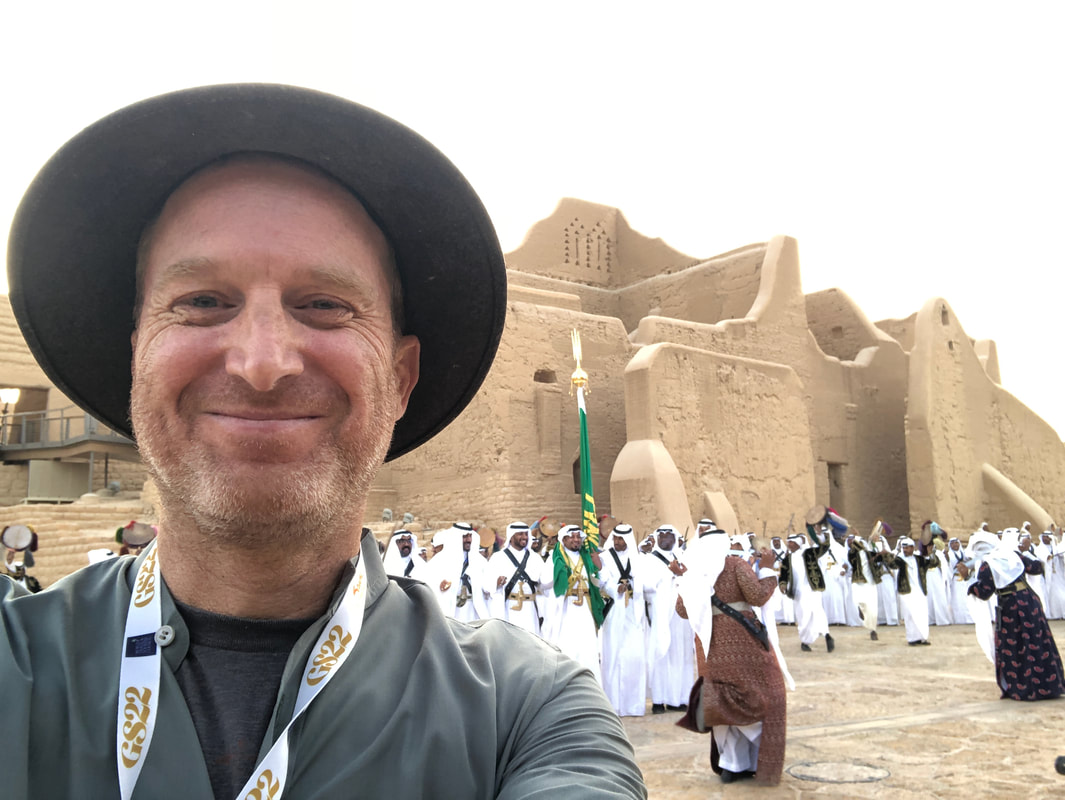
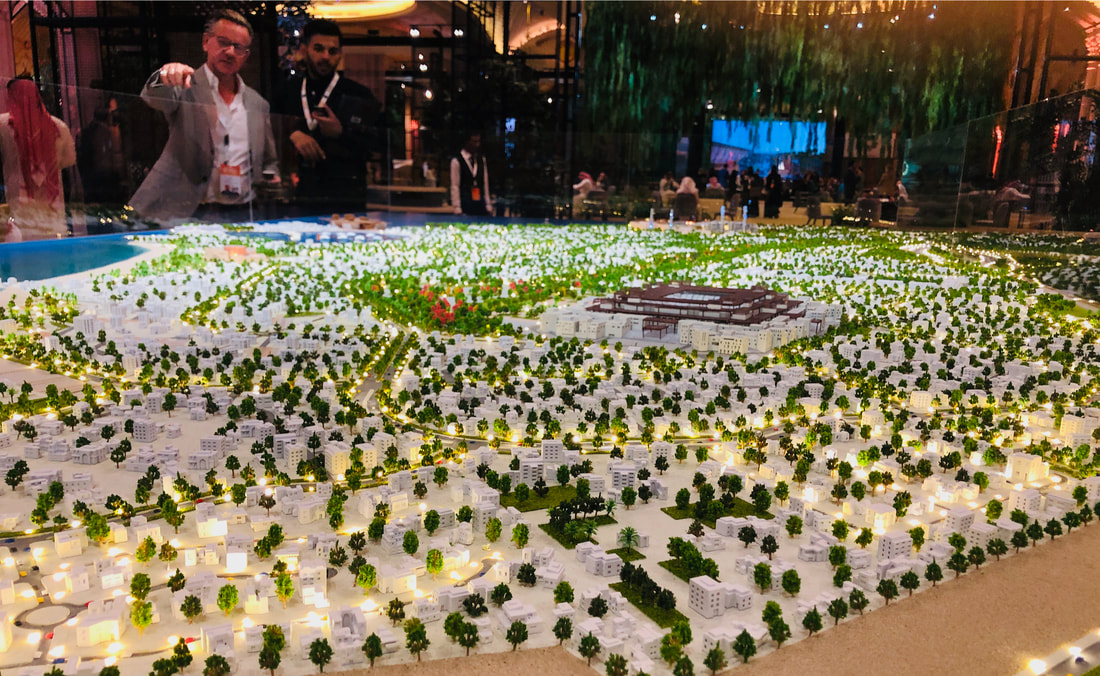

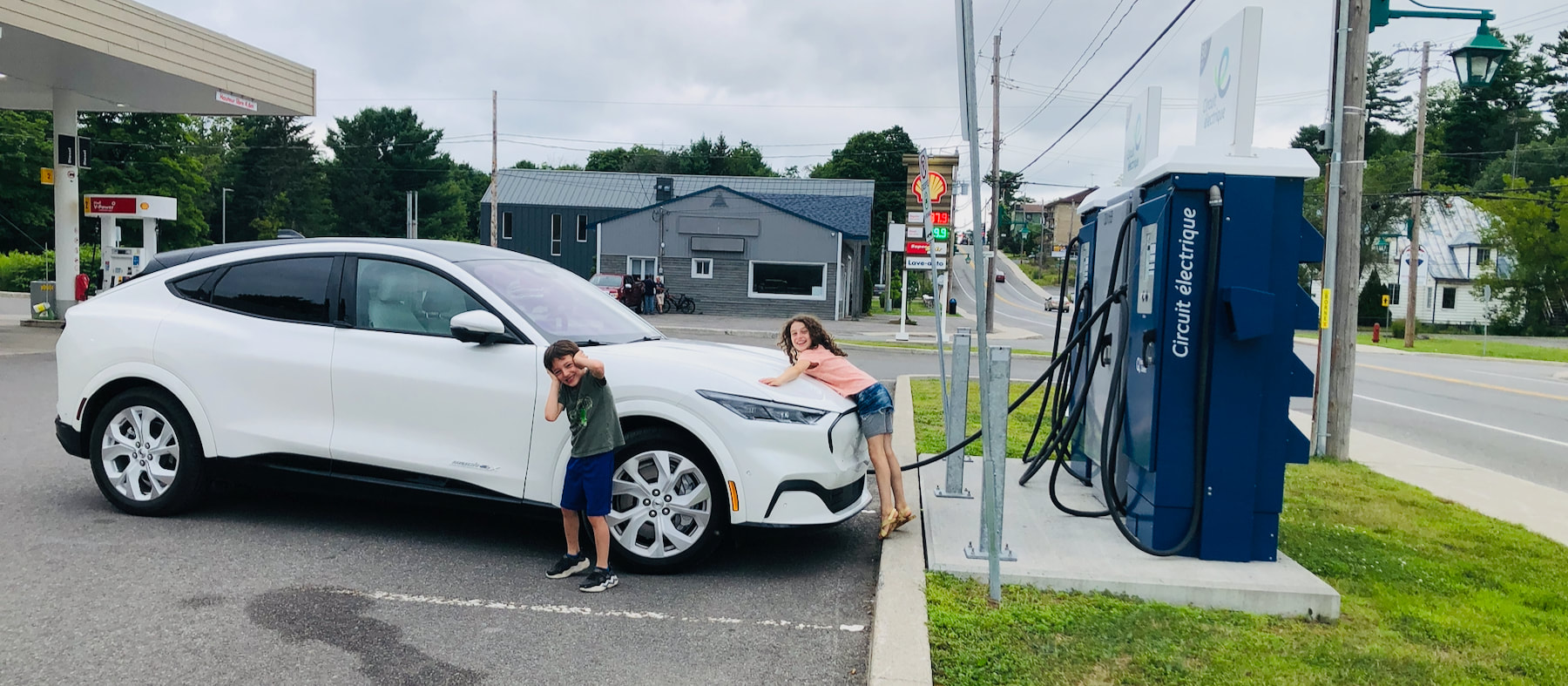
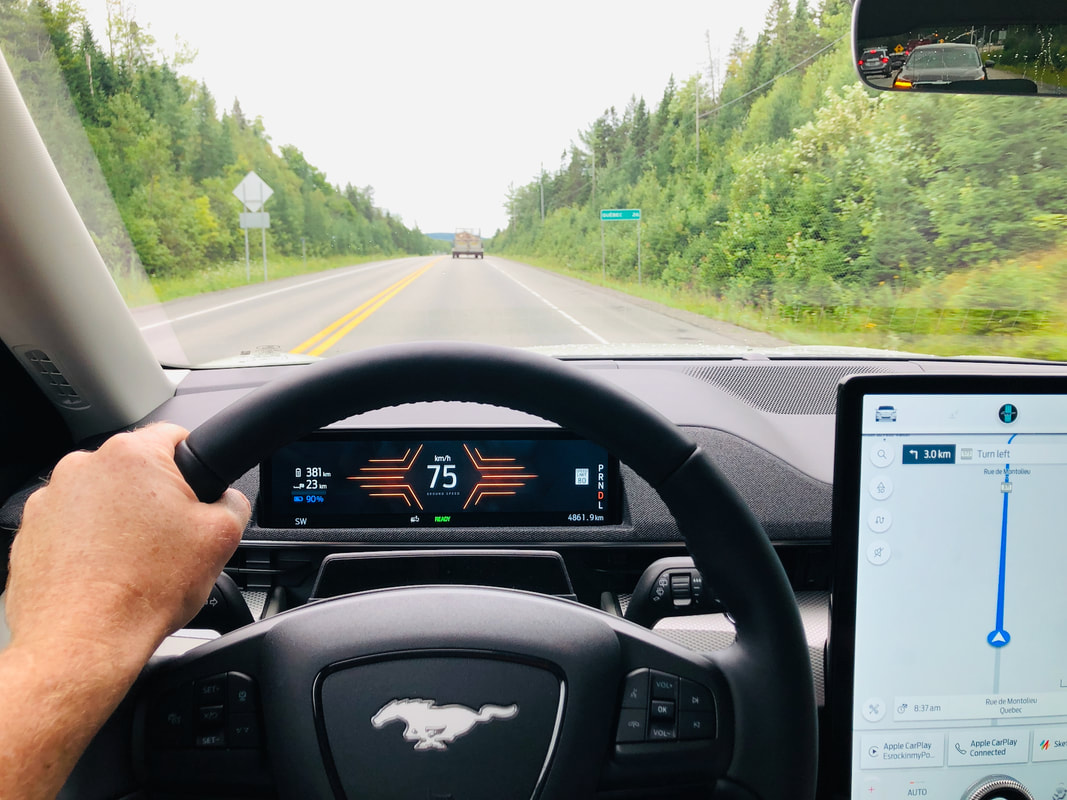
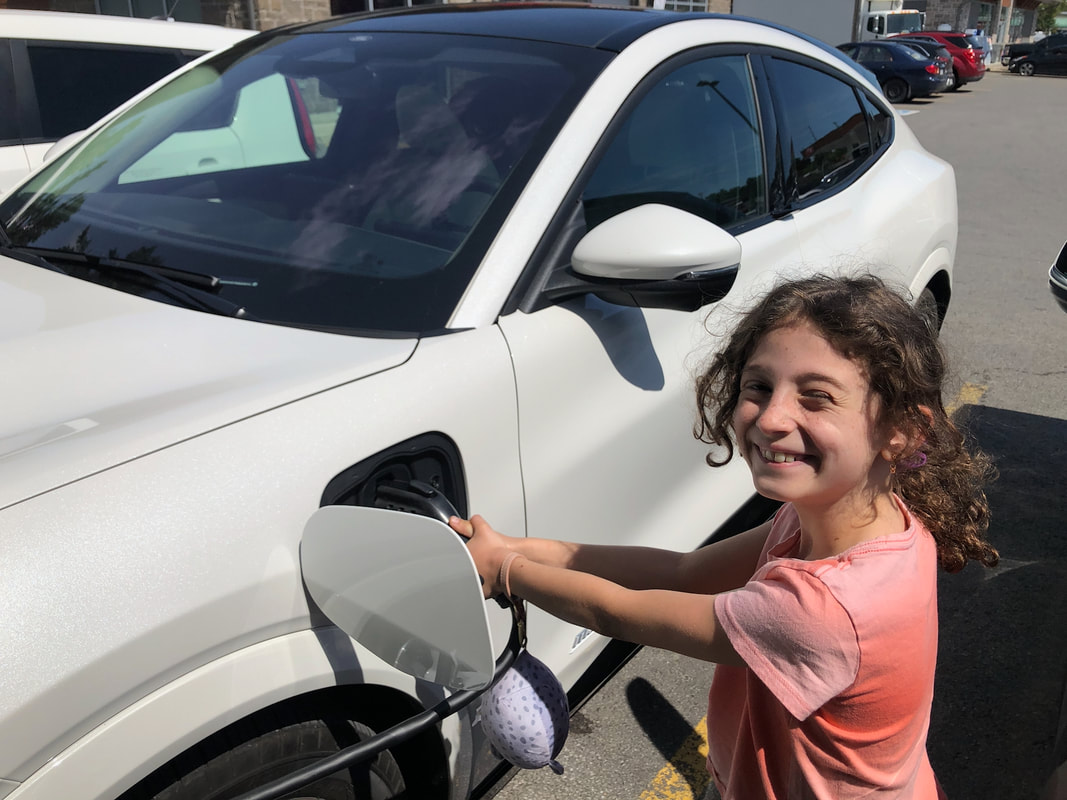
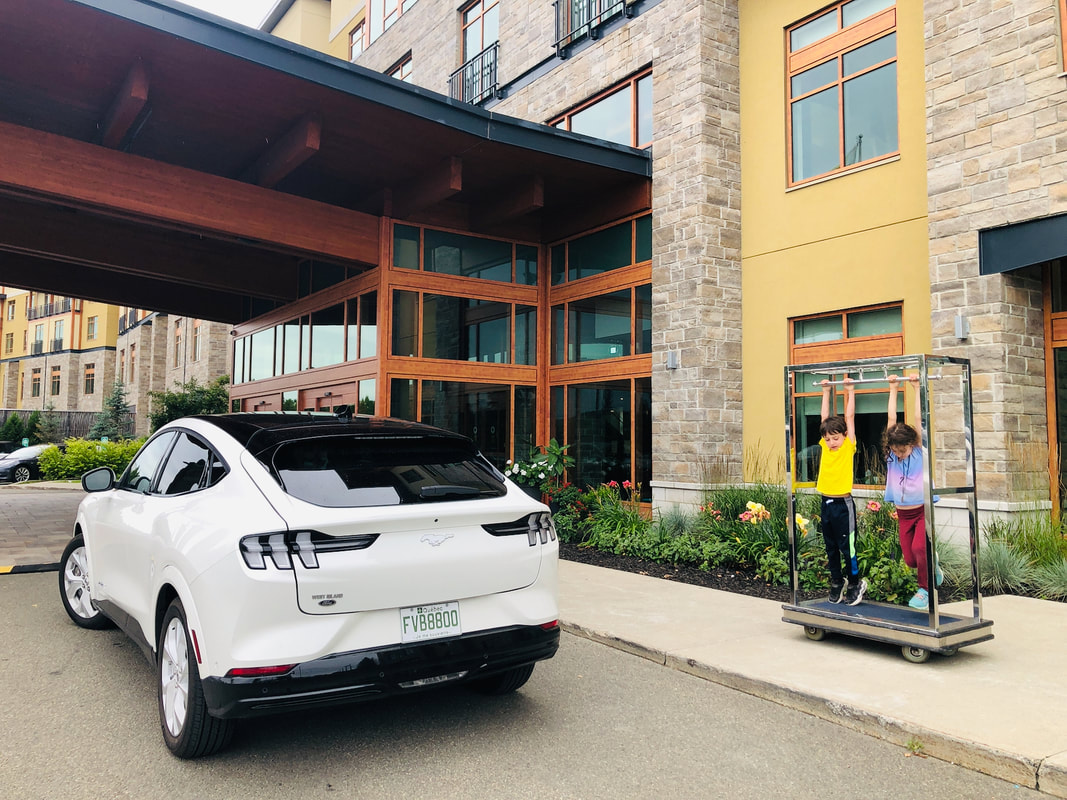
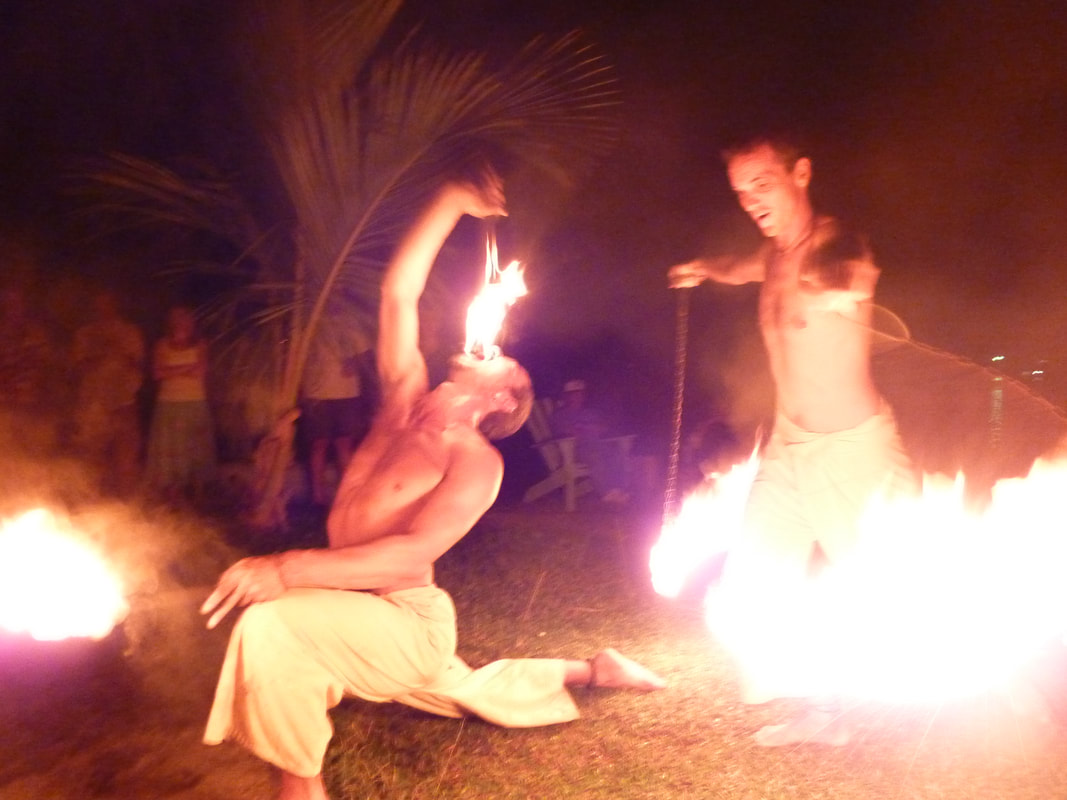
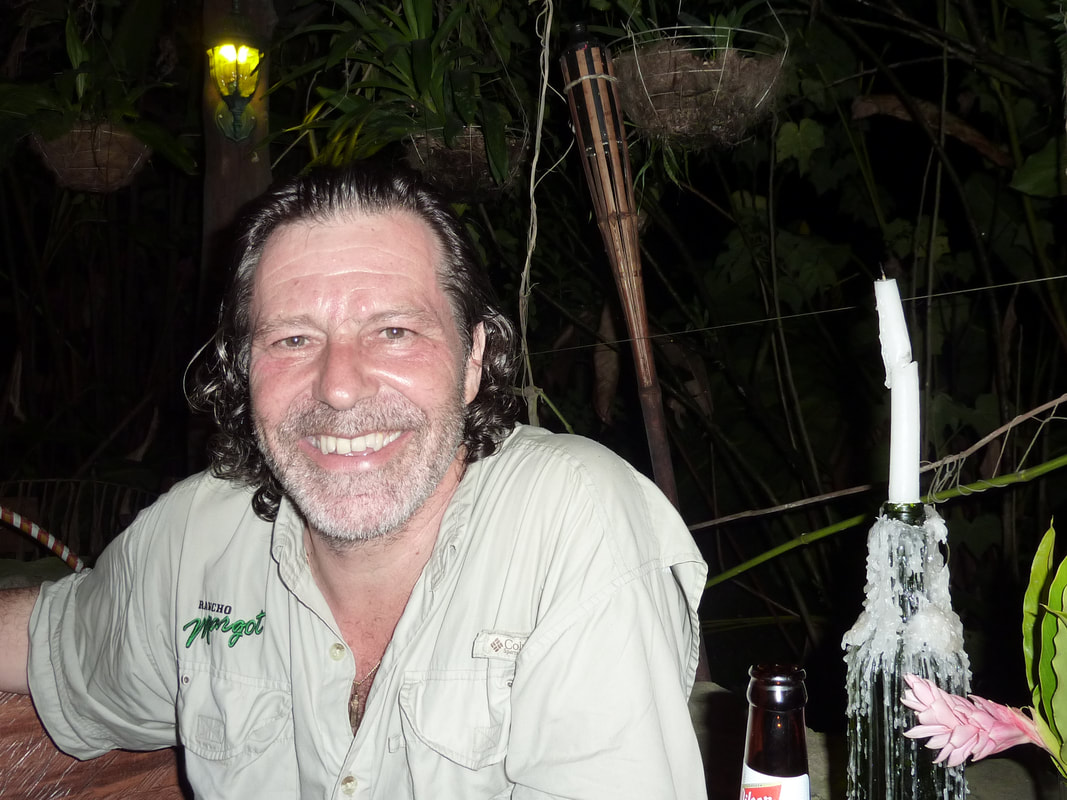
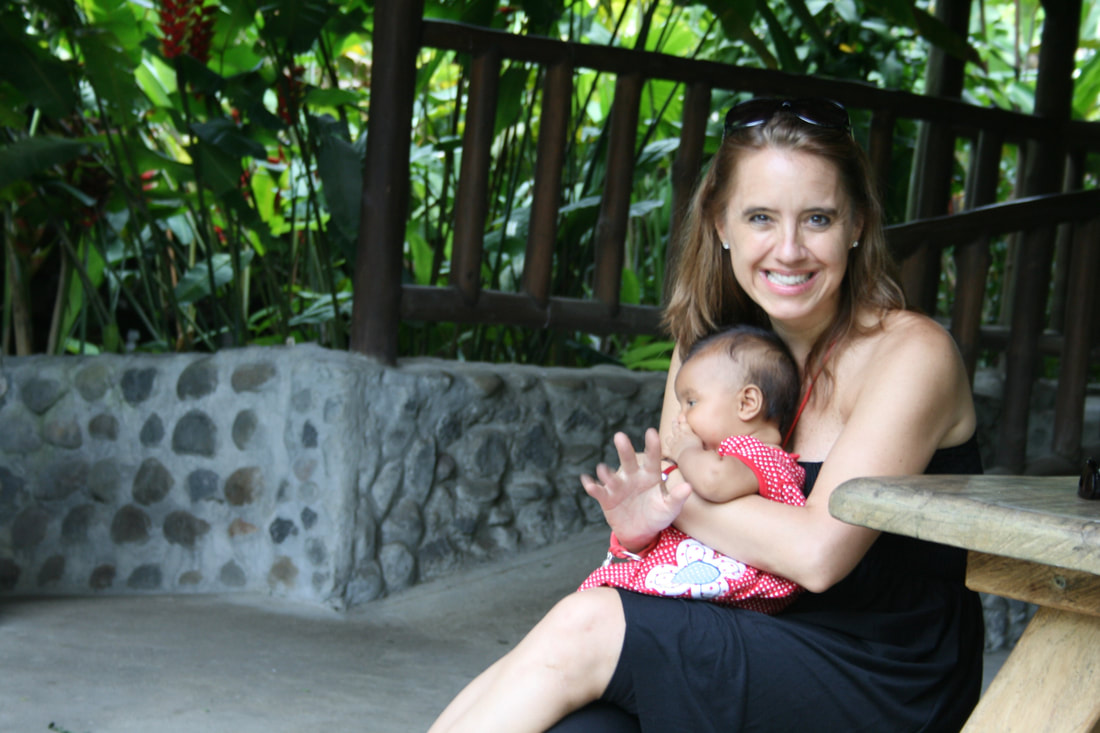
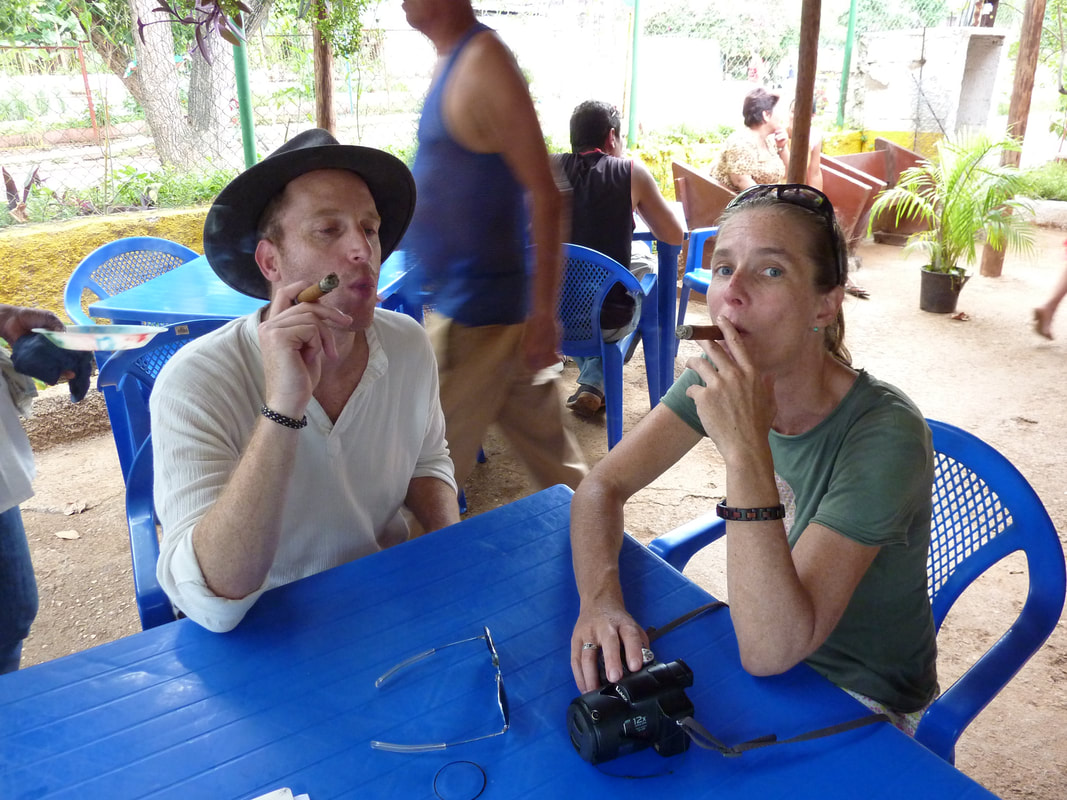
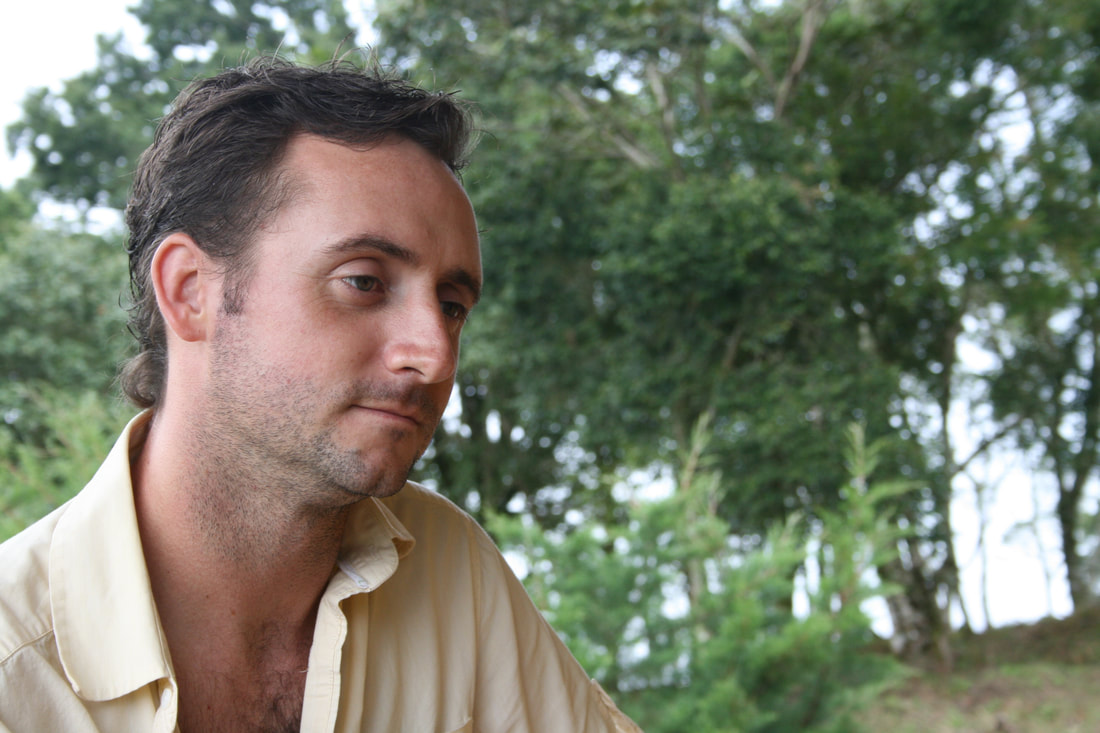
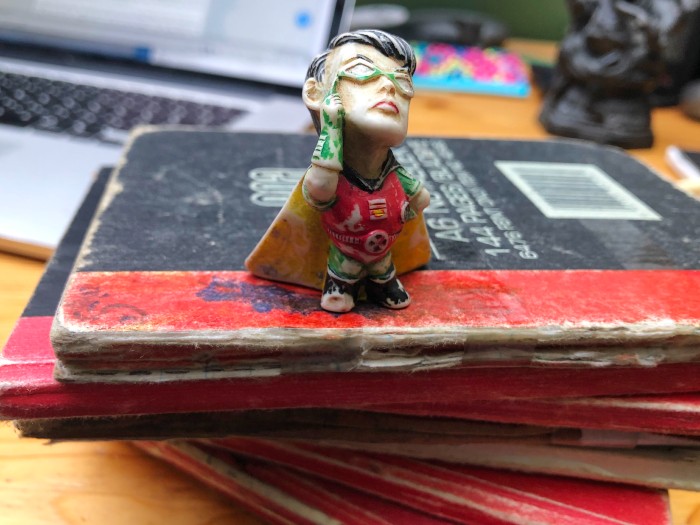
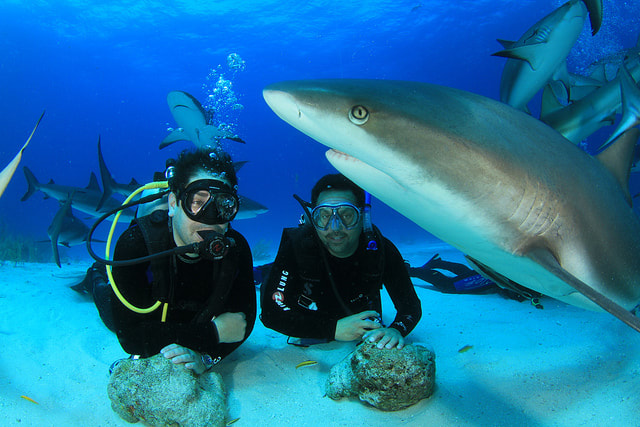
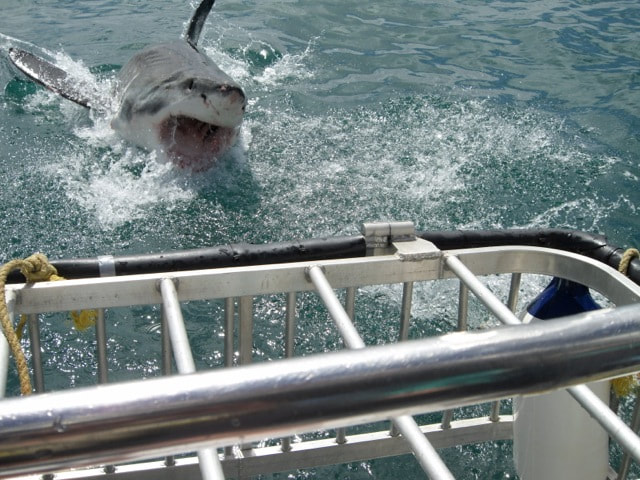
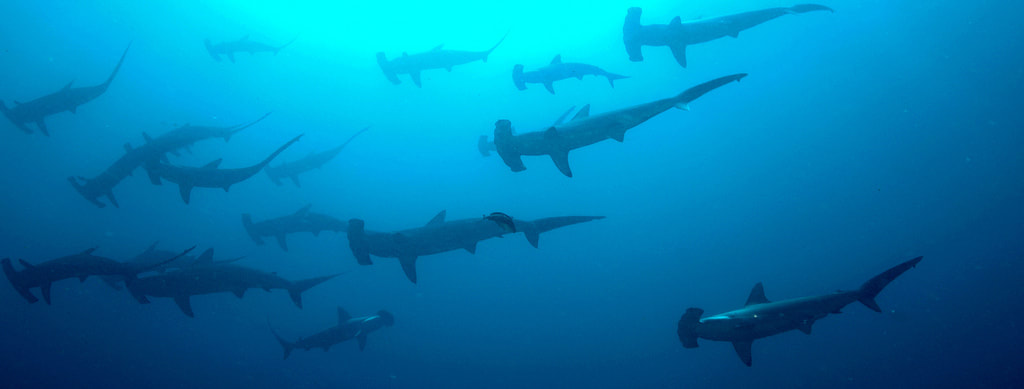
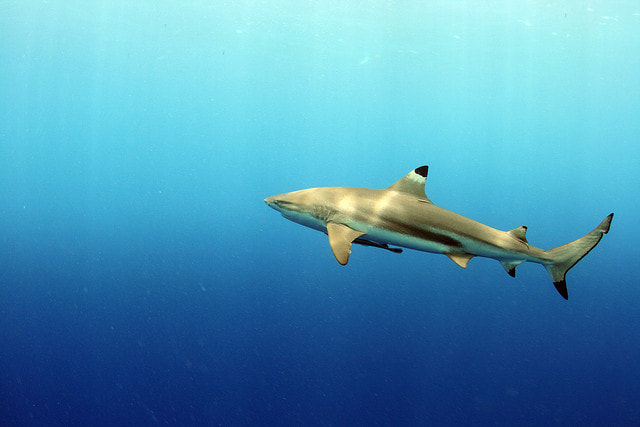
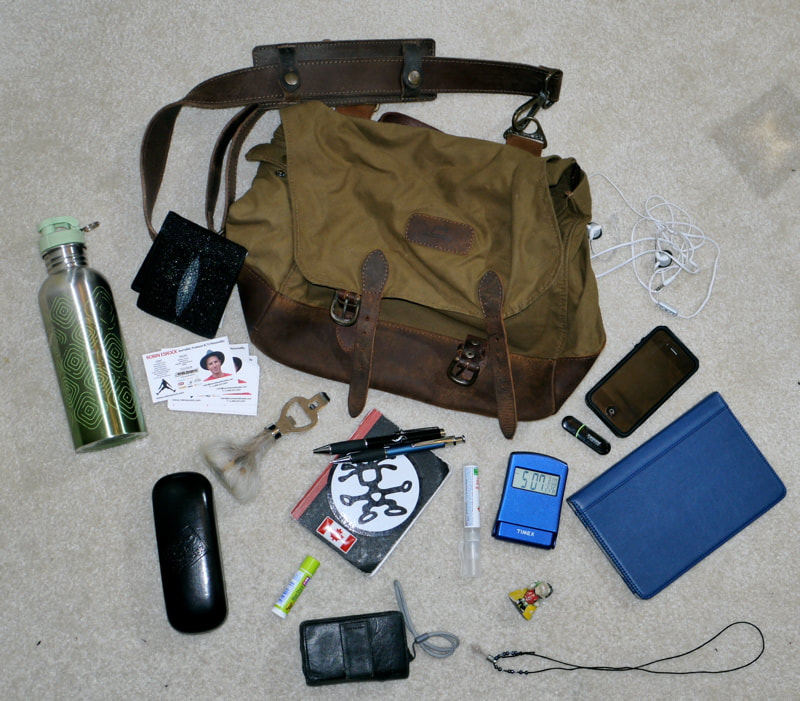
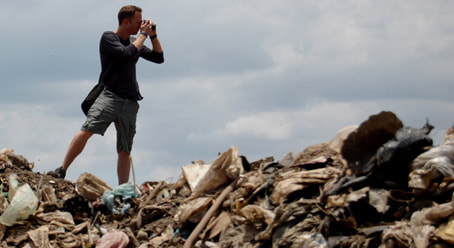
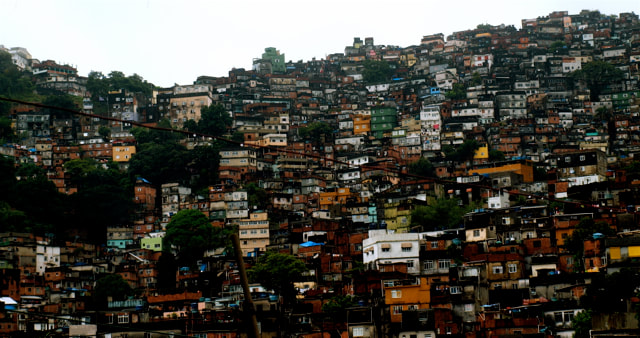
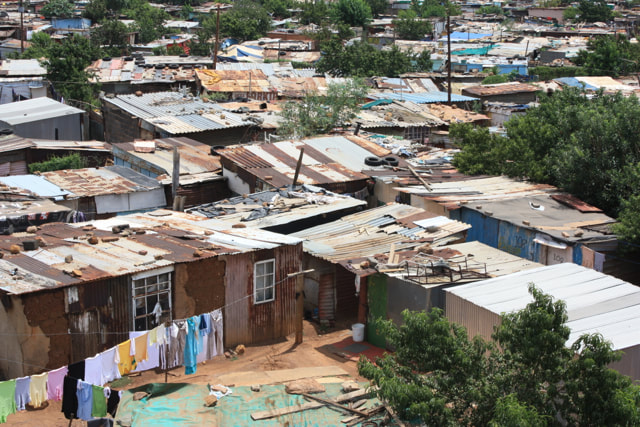
 RSS Feed
RSS Feed

